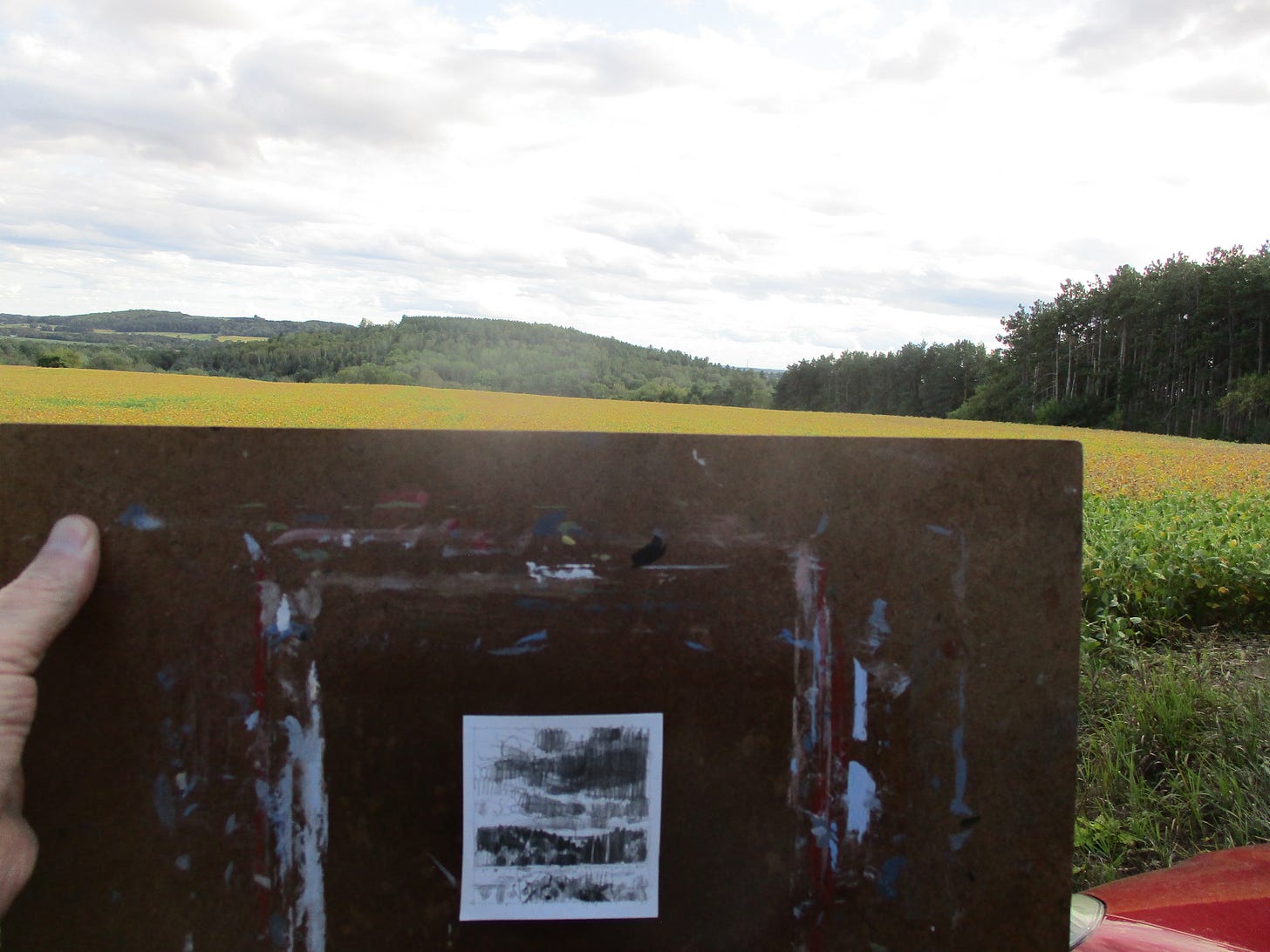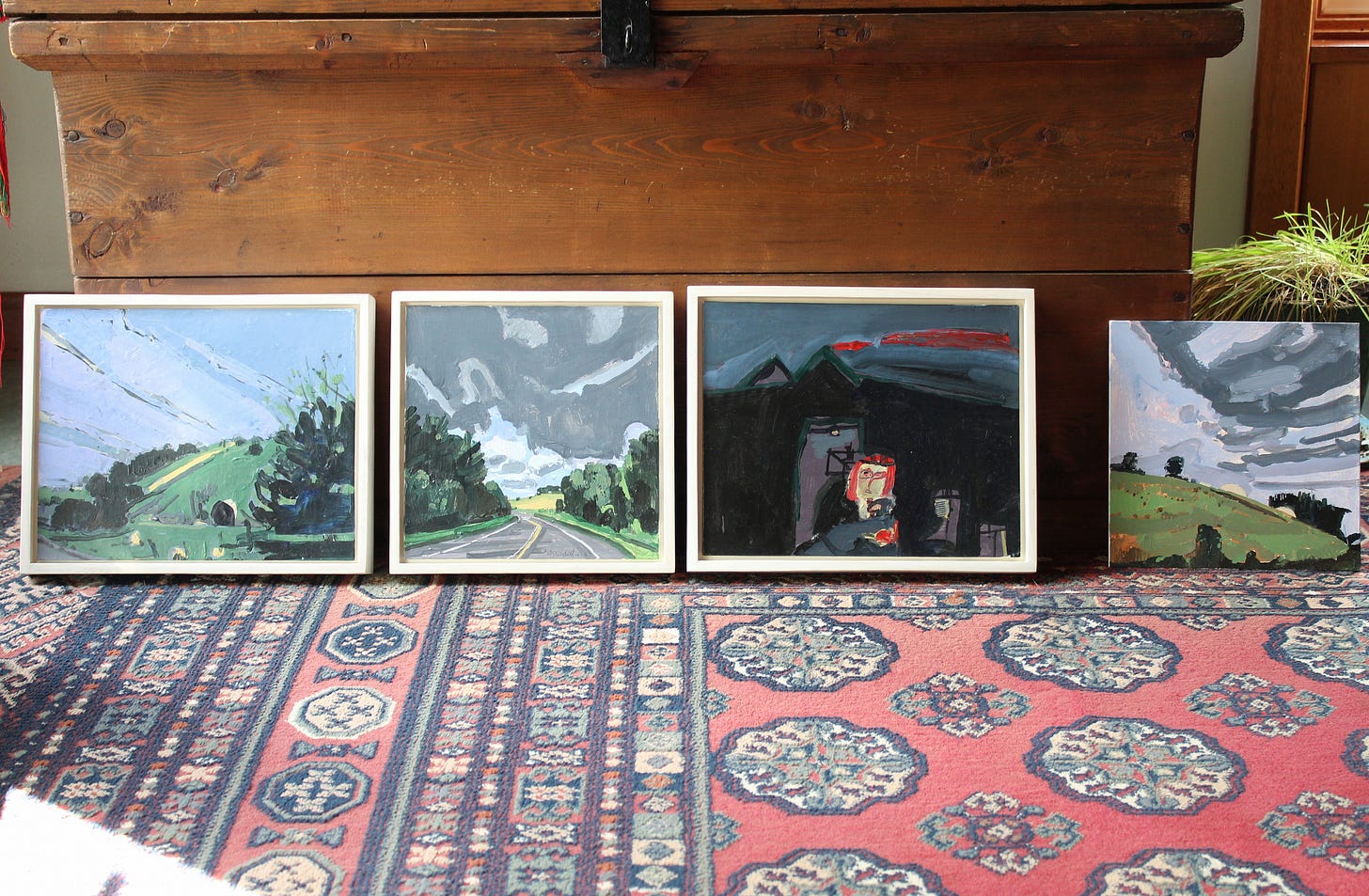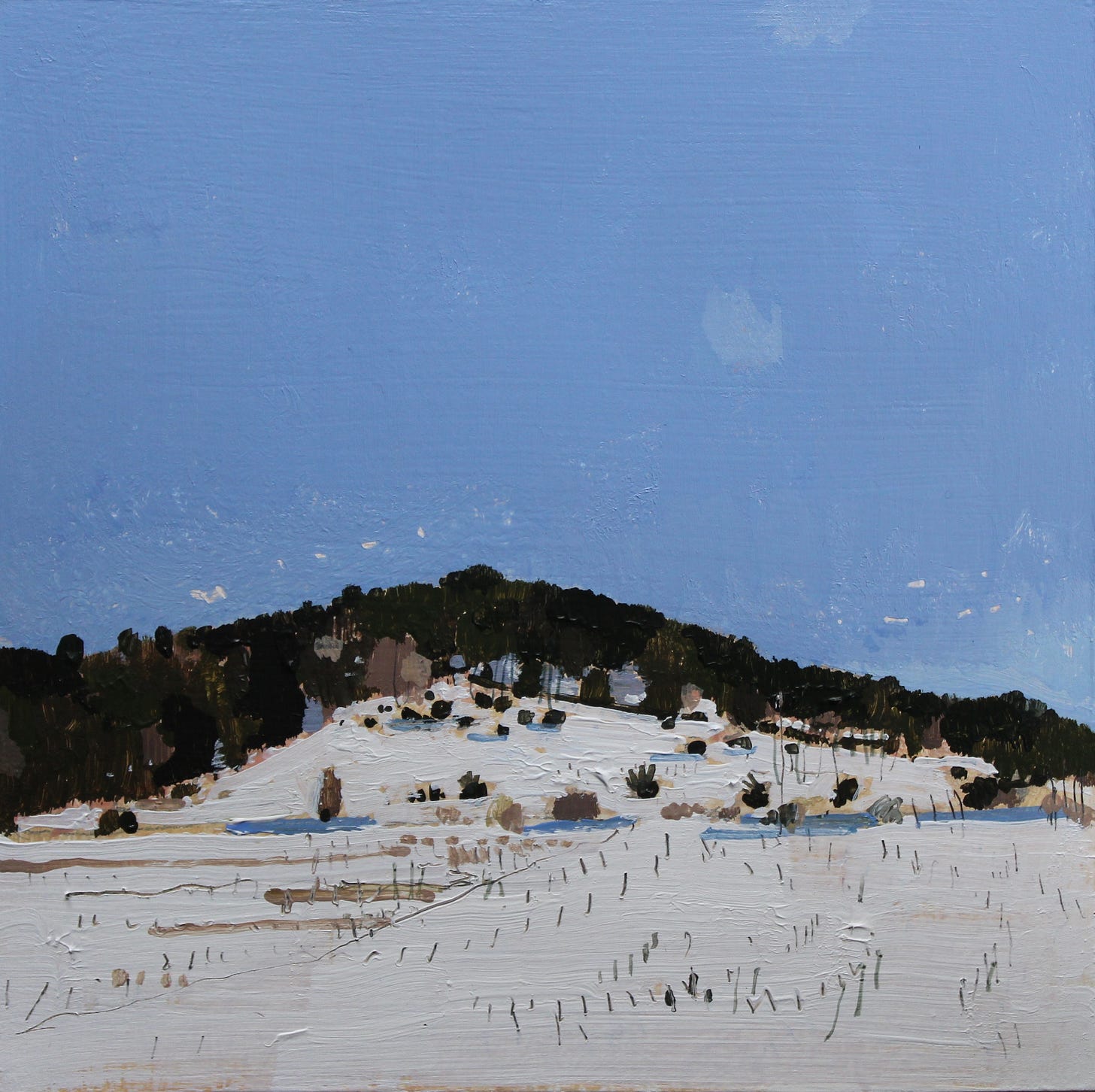I’ve never experienced artist’s block and somehow I doubt I ever will. I’m in my latter 60s now so I don’t think it will happen. I don’t really know first-hand what artist’s block is, but I suspect it happens when……
…….a person puts too much pressure upon themselves and feels they cannot perform or deliver to a level that they expect. So, a type of performance anxiety?
Or it could be that the excitement/payback/reward that comes from the experience of making art fizzles to a level where the whole enterprise no longer seems to be worth the work and effort that goes into it?
Or, it could be a larger definitional crisis, where the person comes to doubt the value or integrity of the whole artistic enterprise, not only his small contribution to it? So they might ask questions like ‘What the hell is the point of this crap anyhow?’.
Or, it could be just a loss of direction where a person cannot find a suitable path of action….more of a logistical thing?
Well I think all of the above are different from laziness or procrastination, which I think it’s likely that everyone gets to some degree, some of the time. At the end I’ll discuss a few things that help with laziness or procrastination.
I do a lot of things to take the pressure off myself because my main aim is just to continue making art. I’m really clear on this motive and there is not much interior conflict related to this intention.
So here are some of the things I consciously do to make life easier for myself, and that actively encourage me to make more art:
1) I do NOT aim for masterpieces or large artistic statements. I have no interest in major artistic breakthroughs…I do not think they exist. Art is a matter of daily practice and steady, slow movement. I avoid the word ‘development’ because I’m not really sure you’re developing……you’re moving, and I think that’s enough. It helps me to think of art making as diary entries. Today I made this. Tomorrow I’ll make that. This was very interesting to make, and what I do tomorrow will fascinate me also. In view of this, it is counterproductive to be too critical about your output. That would be like tearing out a page of your diary because it doesn’t measure up…..WTF? Of course you will always do your best. That is a given and really needs no discussion. Under what circumstances would you NOT do your best? You’re doing your best all the time. So don’t try too hard and don’t worry…..they do nothing to help your cause. But, you DO have to show up, and you have to arrive with the requisite physical and mental energy/excitement to do the task. And there are things you can do to ensure that this happens, that have little to do with tricky ideas like INSPIRATION. Duh….you don’t need inspiration to begin. Inspiration will happen when you’re working.
*(If you think I’m inspired when I start these pieces, you’d be wrong. I’m often tired or thinking of other things. But, I am enchanted by this place where I live so I suppose that counts a great deal as a background motivator. But once I start making the picture, I’m no longer tired, and the excitement of making kicks in. That’s why you shouldn’t wait for inspiration.)
2) In relation to the idea of art being like keeping a diary, I have NO rejects. What I start, I finish, and they are all successes. They all interest me, and they all provide a positive force within my life. That doesn’t mean that there aren’t favorites over time, but in general, my favorite piece is the one I finished today. There is a method I employ that allows me to fully resolve every picture I undertake, and I go into that at some length in my essay here: A Continuous Critique There are ways to have each composition fascinate you at the end of your sessions, and I actively practice what I lay out in this essay…none of that is theoretical, it’s all practical.
In a real way, I think of my artistic products the way a baker might think of her loaves of bread. I made this and maybe you can use it and get benefit from it. It’s not too expensive, and it’s on public display, and I have a shop. So here you go. I hope it tastes good, and I hope you enjoy it. I’ll make some more tomorrow, so if you enjoy the bread, come back again! As well, being of service, being useful, is a good motivator to keep going.
*(….here’s a loaf of bread for you….I think it tastes pretty good! No need to get all angst-ridden and self-conscious about making stuff.)
3) Generally I work small so that I can match the work session to the degree of mental energy I have going into the task. Some things are smaller and some are bigger. If I don’t feel overly energetic or my mental energy is not the highest, a smaller piece, and fewer pieces will be undertaken that day.
4) Remember that making a work of art will ENERGIZE you! Completing an art piece will give you a large mental lift that will last a long time…or at least a day….until the next piece is undertaken and completed. There has never been a time when completing a work of art did NOT energize me and provide all kinds of positive energy. So…this really helps to keep the whole making process moving along at a good rate.
5) Every day I do things that put me in close contact with my subject, which is the landscape around me. This means going for both walks and drives. And none of this ever seems like work.
6) The work I produce is NEVER hidden….it is always on display, and I stare at it even when I watch TV or a movie (it’s easy to move small work around on drawing boards). The work is a constant and welcome companion. Once the place gets too full of work, I gradually remove and store the older pieces.
*(….when I watch TV, I’m also watching these….)
7) I produce a lot of different kinds of work…different sizes, paintings, collages, mixed media, drawings, paintings in studio, paintings on site, representational paintings, abstract paintings. I have to keep the excitement/anticipation level high so I’m not concerned about stupid ideas like stylistic consistency. Variety helps you encounter surprise, and surprise can be a large motivator. You should produce whatever the hell you want to and need to, and if you think you must force yourself into some type of stylistic straitjacket, you have been sold a huge pile of crap. It’s your whole personality/sensibility that ties everything together…….you don’t have to worry about artificially harmonizing things with something as simplistic and irrelevant as style.
*(The piece above is a Stooshinoff, and the piece below is also.)
*(At another time I’ll discuss the reasons for using different methods and approaches, and how doing so can help your motivation to produce. )
8) Watch carefully, consciously, what raises your motivation levels, and what reduces them. Stop the things that reduce them……increase in frequency the things that increase them.
Now, about laziness and procrastination. Those are normal day-to-day tribulations, easier to deal with. But know that it will ALWAYS seem like the wrong time to start a painting. But start anyway. Finishing it will always feel great.
There is a natural resistance to starting a painting, even though I know that things will change once I start. Here are a few things about starting:
Set up times in advance when you know it’s a good time to make a picture. I always try to picture what the 2 hours forward will feel like before I start. And have some comforting rituals to set up at the start. They signal that something is to come…it’s neither good nor bad….you’re just setting the stage. I often feel rather tense and uncomfortable during this stage, because I’m heading into an uncertainty. And making a picture is really about welcoming uncertainty. But by doing your rituals your mind and body will respond by getting ready as well. Think of it as getting ready to ride out with the posse to pursue the bad guys who seriously need pursuing. So you have to pack your saddle bags, fill your canteen, and kiss ma goodbye (or insert whatever metaphor you want here).
Everything in the world is awkward…everything is a shit show. So don’t expect your art making to be blissful and euphoric. Try not to be goofy about this stuff. You’ll get your payback once you do some work, so avoid pie-in-the-sky mentality. At the same time, aim for ease, and you’ll achieve ease. Try to put your mind in a slightly different place. Avoid harsh judgment….it doesn’t mean you won’t be making decisions based on your responses. But be really easy with yourself. Keep your hand and body moving and don’t stop to second-guess at all. Just move forward. Let painting decisions come easily, and let them stack up. If the stack is wrong, change it, but again, with ease and without any sense that you took a wrong turn. All decisions are natural and right at this stage, and you’ll easily edit yourself as you see fit.
At some point you’ll get a surprise and you’ll say, ‘holy shit, that’s kind of neat!’ And your picture will induce you to look harder and longer at it. And you’ll be happy you made it. What more do you need? BTW….be careful of tinkering too much once you notice your own positive response….don’t look a gift horse in the mouth!
If you do this enough times, I bet you’ll want to keep repeating it. It will still always be a bit hard to start, but you’ll know something good is coming, so you’ll overcome the natural resistance to begin.
My Etsy Site....where I list everything I make
My Website...purchases can be made here too, but only with PayPal











I just discovered your work (god I love it) and your insights confirm the suspicions I have in my own naive and young art journey. I dearly needed this to reflect on! Thank you.
Great post...Will be saving and rereading and rereading...and at some point get to doing 😏